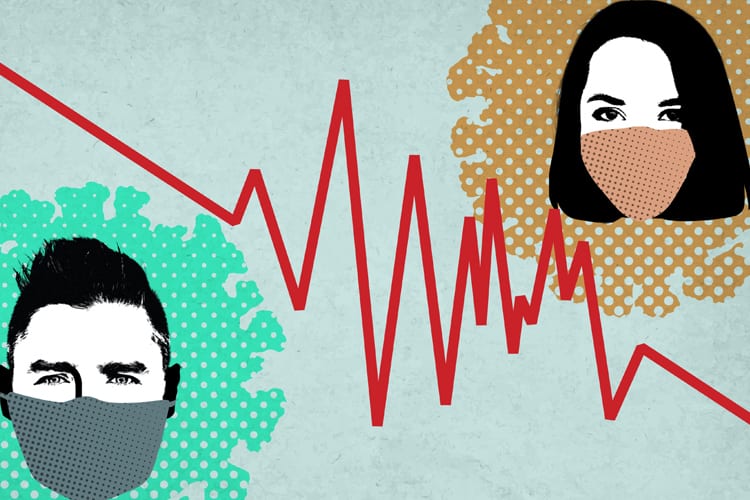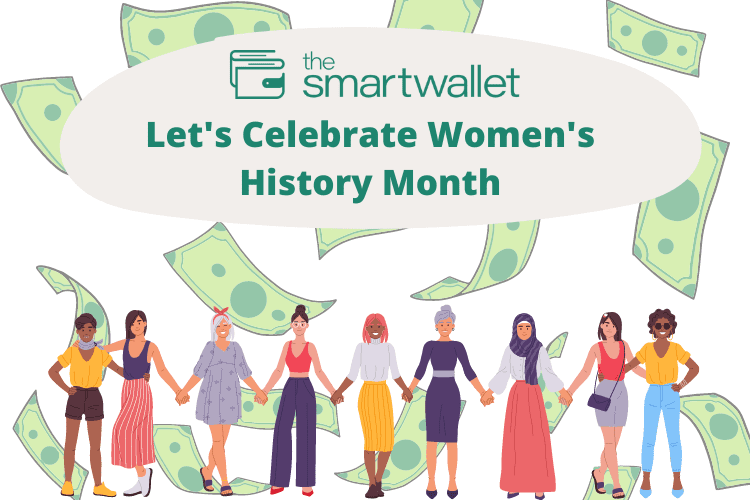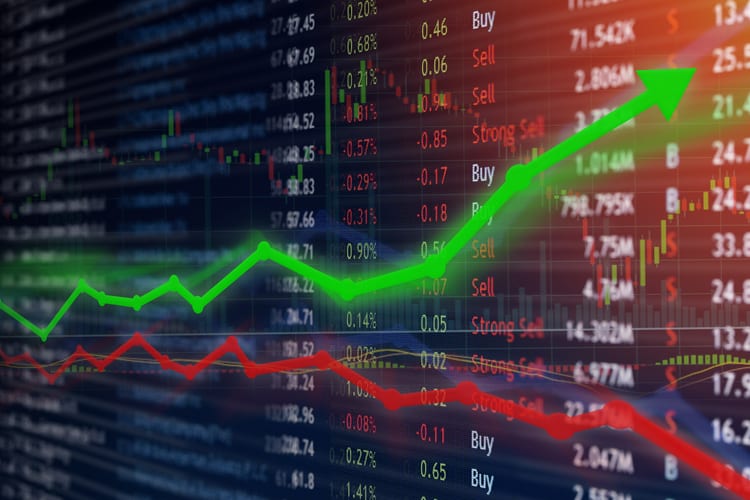Survey: More Than Half of American Millennials Are Financially Struggling Since COVID-19 Started

COVID-19 has affected everyone’s lives and it has now been 5 months since a national emergency was declared in the United States on March 13, 2020.
Currently, almost half of the entire U.S. population is jobless.
And one of Wall Street’s best-known strategist, Torsten Slok, says 30 million jobs would need to be created to get the employment-to-population ratio back to where it was at its peak in 2000.1
For this survey, we focused on Millennials’ responses on how the pandemic has affected them.
How COVID-19 Affected Millennials’ Jobs
While 39% of Millennials have lost their jobs completely, 33% reported no change. Click To TweetThis is likely due to the increasing trend of remote workers before the pandemic started. In the last 12 years, there’s been a 159% increase in remote work and many believe that flexible working is the new normal. This will increase even further as COVID-19 continues and beyond.
If a worker wasn’t completely remote, a 2019 survey revealed that 54% of all U.S. workers2 worked remotely at least one day a month. It would be natural then, to shift to a fully remote position when the outbreak started.
For gender breakdown, males reported more lost jobs and more reduced hours. Females were more likely to report no change to their work situation and more furloughs.
Who Are the Essential Workers?
Essential workers are also part of the “no change” bucket. When you think of that term, doctors and grocery workers come to mind first as the average American comes into contact with them as well as mass media reporting. But there are other roles as well.
The Department of Homeland Security classified 16 employment categories as essential.
| Health Care & Public Health Workers | Food & Agriculture Workers | Law Enforcement, Public Safety, & First Responders |
| Energy Employees | Water & Wastewater Sector | Transportation & Logistics |
| Public Works | Communications & Information Tech | Other Community-based Government Operations |
| Critical Manufacturing | Hazardous Materials | Financial Services |
| Chemical Workers | Defense Industrial Base | Commercial Facilities |
| Dams Sector |
Chances are you know at least 1 person or more that is considered an essential employee.
How Millennials Are Managing Financially
When asked how they’re managing financially, 51% revealed that they’re not.
Ana Kent, a Policy Analyst from the Federal Reserve Bank of St. Louis described what was happening to Millennials as a “toxic storm” in a podcast.
She summarizes that Millennials have been hit twice within the past 12+ years. That they’re old enough to be negatively affected by The Great Recession (2007-2009) and also young enough to be early to mid-career when COVID-19 started this year.
In a Transunion Wave Pulse survey, Millennials feel the heaviest economic impact compared to any other generation. 86% of Millennials worry about being able to pay bills and loans, particularly credit card bills. Student loans are also a factor.
Respondents that revealed that they’re not managing financially are most likely dipping into their savings, paying the minimum on bills, using credit card balance transfers, taking out personal loans, opening new credit cards, or using the stimulus check to manage.
Our findings show that there were slightly more Millennials borrowing money than relying on unemployment. The rest are relying on new jobs or side gigs to help ride out the rest of COVID-19, however long that may be.
The gender breakdown shows slightly more females borrowing money as well as getting new jobs that paid less or more than their previous roles. Whereas males tended to rely more on unemployment as well as take on side gig(s).
Types of Side Gigs Millennials Are Choosing
Respondents that have taken on a side gig to supplement their income answered further on the type of side gig chosen.
We see that males were more likely to take on a side gig with 26% freelancing and another 26% selling items. Males were also more likely to choose to be a delivery driver for DoorDash, UberEats, Instacart, etc.
For females, the “other” category outranked any other option. According to Fiverr and Upwork3, these side hustles are in-demand that can be done from home.
- Teaching: This includes anything you’re good at instead of the traditional tutoring viewpoint. Cooking, crafting, language, fitness, music, etc.
- Technology-related jobs related to app development and product testing
- Blogging & Social Media: Writing blog posts, building a site, and managing social media accounts, in addition to influencer work.
Other options can include participating in paid surveys, rewards programs, or sharing anonymous shopper data in exchange for rewards.
How Concerned Are Millennials?
It should come as no surprise that more than half are more concerned since the pandemic started.
In general outbreak sentiment surveyed by Fluent Pulse, 72% of Americans in early March had felt calm and collected. In early June is when those feeling very nervous surpassed the calm respondents.
Across the generations, health was the top concern, particularly their personal health and for their families. For Millennials and Gen Z, they’re more likely to be worried about their finances versus the health of the U.S.
The top 5 states with Millennials that were more concerned about their finances are:
| Texas | 8.70% |
| California | 8.27% |
| Florida | 6.99% |
| Georgia | 5.56% |
| North Carolina | 4.71% |
But who are the 9% of Millennials that are less concerned? We break it down by state here
Notably, the top 6 states where Millennials were less concerned with their finances at the start of COVID-19 are NY (12.5%) CA, FL, TX (tied at 7.5%) GA, TN (tied at 5%) Click To Tweet
You may have noticed state overlap on those who were more concerned and less concerned in the states of CA, TX, GA, and FL.
This makes sense as CA, TX, and GA are on the top 10 states for income inequality. FL ranks in the middle of the 50 states.
What Are Millennials Cutting Costs On?
60% of Millennials reduced their spending due to the pandemic.
Here are some of what was reduced.
Despite eating out as the largest cost-cutting activity, it’s still considered a top expense overall for Millennials. Click To TweetClutch, a B2B ratings and reviews platform, listed the top four expenses for Millennials as:
- Groceries (40%)
- Alcohol (13%)
- Restaurants (8%)
- Health & Beauty (3%)
Final Thoughts
At the beginning of 2019, Millennials became the largest full-time workforce4 in the United States. However, they are the unluckiest generation since they’ve been hit twice already with recessions, the first being the Great Recession and now COVID-19.
Even though they started saving much earlier than their parents, and are the most educated generation, they’re currently on pace to become the first generation to end up poorer than their parents as they’re entering peak earning years.5
It’s no wonder that at the start of the outbreak, 67% of Millennials were affected in some way that hit their livelihoods and most feel that they’re not managing their finances well enough.
We expect as time goes on, that this unlucky but resilient generation will find even more ways to supplement their income and reduce further spending to create smarter habits.
Millennial COVID-19 survey commissioned by The Smart Wallet and conducted by Fluent Pulse
Additional sources
1 CNBC
2 Motus
3 CNBC MakeIt
4 Washington Post
5 MarketWatch









